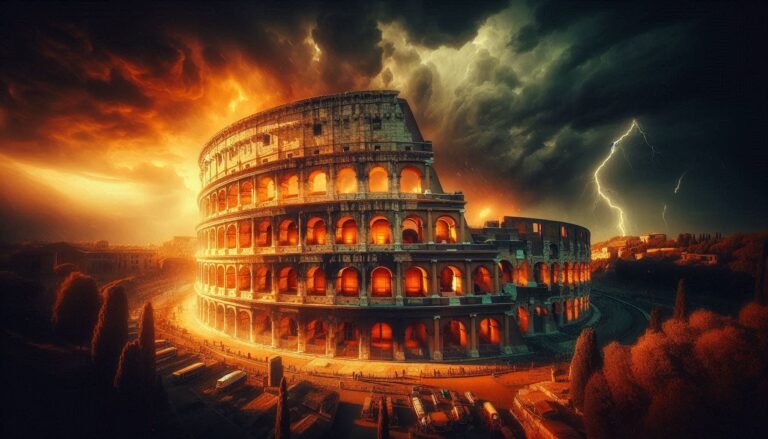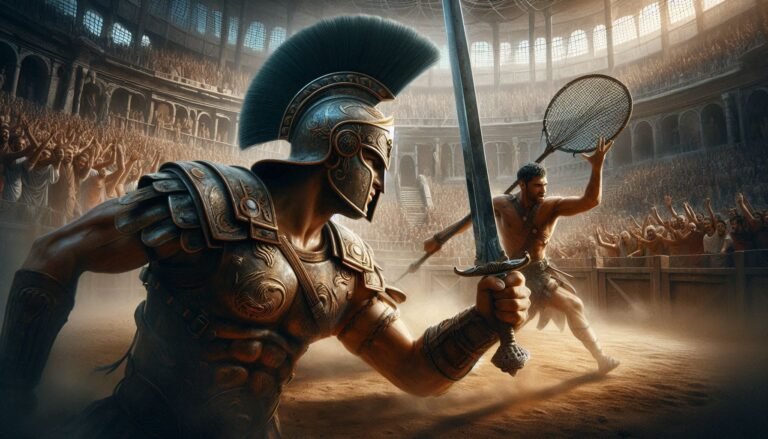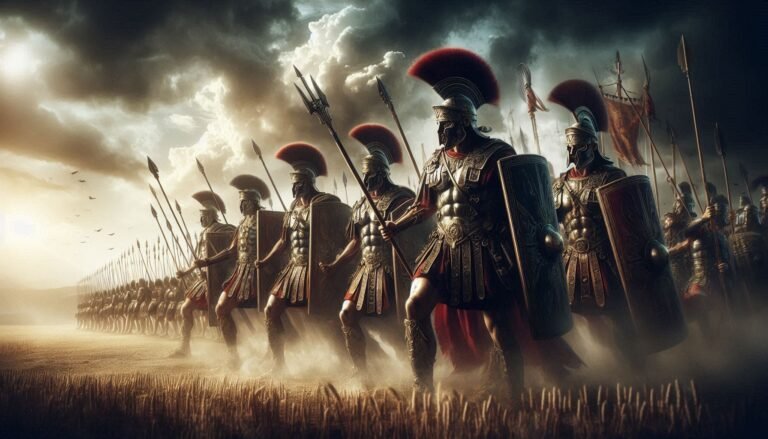The Roman Empire stands as one of the most extraordinary civilizations in history. Spanning over a millennium, it shaped much of Western culture, politics, and military strategy. From its legendary rise to its dramatic fall, Rome offers countless lessons in power, governance, and resilience. What led to its dominance, and what ultimately caused its decline? Let’s explore the rise and fall of Rome and the lessons it leaves for modern societies.
The Rise of Rome: From Republic to Empire
The Foundations of Rome (753–509 BCE)
According to legend, Rome was founded in 753 BCE by Romulus and Remus, twin brothers raised by a she-wolf. Initially a small settlement on the Tiber River, Rome grew into a formidable city-state. By 509 BCE, the Romans overthrew their last king and established a Republic, a government based on elected officials and laws.
The Roman Republic (509–27 BCE)
Rome’s expansion during the Republic was driven by its military strength, political organization, and adaptability. Some key elements that contributed to its rise included:
- A Strong Military: The Roman legions were highly disciplined, well-trained, and organized.
- A Complex Government: Rome balanced power through a Senate, Consuls, and Assemblies, preventing any single individual from becoming too powerful.
- The Rule of Law: The creation of the Twelve Tables (451 BCE) established a legal foundation that influenced future legal systems.
- Expansion Through Alliances: Rome often granted citizenship to conquered peoples, integrating them into its society rather than simply subjugating them.
Over centuries, Rome expanded through military conquest, diplomacy, and trade. By 146 BCE, Rome had defeated Carthage in the Punic Wars, gaining dominance over the Mediterranean.
The Transition to Empire (27 BCE)
Despite its successes, internal conflicts and power struggles led to the downfall of the Republic. Figures like Julius Caesar, Pompey, and Crassus competed for control, culminating in Caesar’s assassination in 44 BCE. His adopted heir, Octavian (later Augustus), emerged victorious in the ensuing civil war, marking the birth of the Roman Empire in 27 BCE.
The Golden Age: The Height of the Roman Empire (27 BCE–180 CE)
Under Emperor Augustus, Rome entered a period of peace, prosperity, and expansion known as the Pax Romana (27 BCE–180 CE). Key achievements of this era included:
Political Stability and Governance
- A centralized government with provincial governors ensured efficient rule.
- The Roman legal system influenced later European laws.
- The empire maintained public infrastructure, including roads, aqueducts, and cities.
Economic and Cultural Growth
- A vast trade network connected the empire, facilitating economic growth.
- Roman architecture flourished, with landmarks like the Colosseum and Pantheon.
- The Latin language and Roman customs spread across Europe, North Africa, and the Middle East.
Military Dominance
- The legions remained well-trained and disciplined, securing Rome’s frontiers.
- Fortifications like Hadrian’s Wall protected Roman Britain from invasions.
For nearly two centuries, Rome was the most powerful civilization in the world, but beneath its success, cracks were beginning to form.
The Decline and Fall of Rome (180–476 CE)
Historians debate the reasons for Rome’s decline, but key factors contributed to its downfall:
1. Political Instability and Corruption
After Marcus Aurelius (161–180 CE), Rome faced a succession of weak and corrupt emperors. Political assassinations, civil wars, and power struggles weakened the empire. The infamous Crisis of the Third Century (235–284 CE) saw Rome split into rival factions, with emperors rising and falling at an alarming rate.
2. Economic Decline
- Heavy taxation burdened citizens and led to economic stagnation.
- Rome became increasingly dependent on slave labor, reducing innovation.
- Inflation and currency devaluation destabilized trade and commerce.
3. Military Problems and Barbarian Invasions
- The Roman army, once invincible, relied on mercenaries, many of whom had no loyalty to Rome.
- Rome struggled to defend its vast borders against constant invasions by Germanic tribes, the Huns, and the Persians.
- In 410 CE, Alaric and the Visigoths sacked Rome, shocking the world.
4. Division of the Empire
In 285 CE, Emperor Diocletian split the empire into Eastern and Western halves to improve governance. The Eastern Roman Empire (Byzantine Empire) remained strong, but the Western Roman Empire weakened significantly.
5. The Final Collapse (476 CE)
The end of the Roman Empire is traditionally marked by the overthrow of the last emperor, Romulus Augustulus, in 476 CE by the Germanic leader Odoacer. The Western Roman Empire crumbled, while the Eastern Byzantine Empire survived for another thousand years.
Lessons from Rome’s Rise and Fall
1. The Importance of Strong Leadership
Rome thrived under capable leaders like Augustus, Trajan, and Marcus Aurelius, but suffered under weak and corrupt rulers. Good leadership is crucial for maintaining stability and growth in any civilization.
2. Economic Stability is Key
Heavy taxation, inflation, and economic mismanagement can weaken even the strongest empires. Modern nations must balance economic growth with sustainable policies.
3. Overexpansion Can Lead to Disaster
Rome’s vast size made it difficult to govern and defend. Empires or nations that expand too quickly without consolidating control risk collapse.
4. Internal Conflict is More Dangerous Than External Threats
While Rome faced external invasions, its internal divisions were often more damaging. Civil wars, corruption, and political infighting weakened Rome from within, making it vulnerable to external enemies.
5. Societal Complacency Leads to Decline
Many historians believe that as Rome became wealthier, its citizens and leaders became complacent. A decline in civic duty, military discipline, and public engagement contributed to its downfall.
The Legacy of Rome
Though the Western Roman Empire fell in 476 CE, its impact on the world remains undeniable. The legacy of Roman law, architecture, language, and governance continues to shape modern civilization. The Eastern Roman (Byzantine) Empire carried on until 1453 CE, preserving much of Roman culture and knowledge.
The rise and fall of Rome serves as both an inspiration and a warning. It shows how ambition, organization, and innovation can lead to greatness, but also how corruption, mismanagement, and complacency can lead to downfall. Understanding Rome’s history allows us to learn from its successes and failures, ensuring that modern civilizations do not repeat its mistakes.
Rome was not built in a day, and neither did it fall in one. But its story continues to shape our world today.



